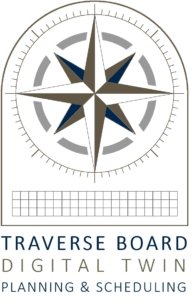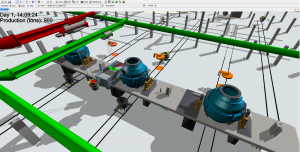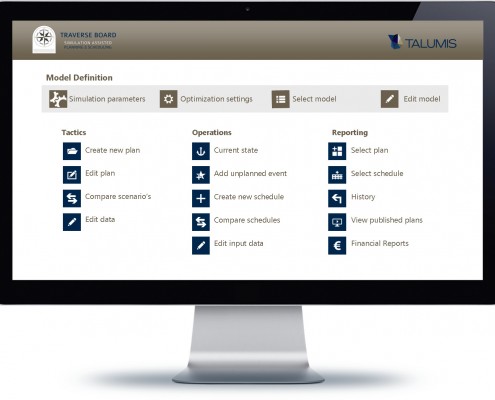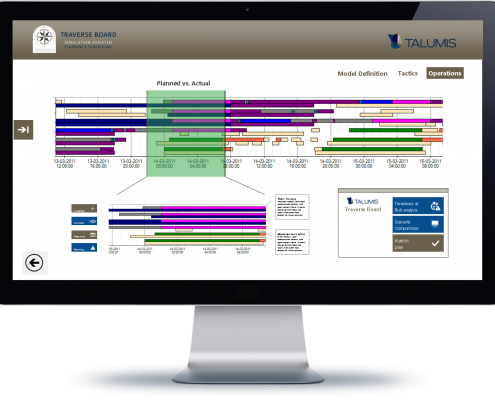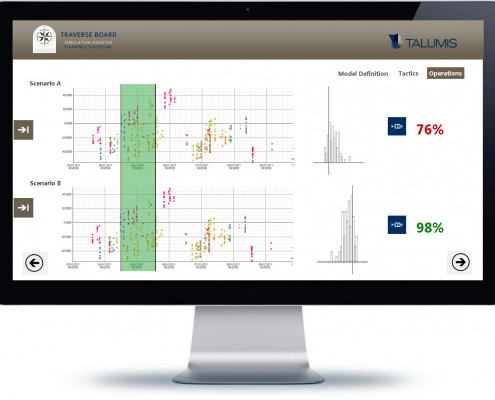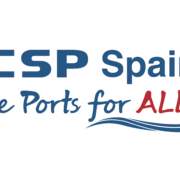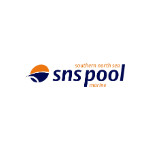DIGITAL TWINS – TraverseBoard Advanced Planning & Scheduling
Diital Twin assisted planning & scheduling software
Traverse Board is a custom made software tool to create Digital Twin solutions. Digital Twins enable tactical and operational decisions through multiple time horizons. Traverse Board’s calculation core consist of simulation models and strengthened with optimization algorithms brought together by a customizable user-friendly interface. The tool is typically used in high risk and high investment businesses.
Integrating real life data, optimization techniques and simulation
A Traverse Board Digital Twin can be used to create optimized day-to-day schedules and plans based on current system status. TraversBoard can also be used to analyze investment scenarios. By combining real life data and the unique strengths of both simulation and optimization, fast, reliable, robust and accurate predictions are created.
Traverse board is a comprehensive platform for creating Digital Twins, creating optimized robust plans and schedules through multiple time horizons.


